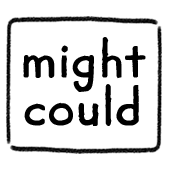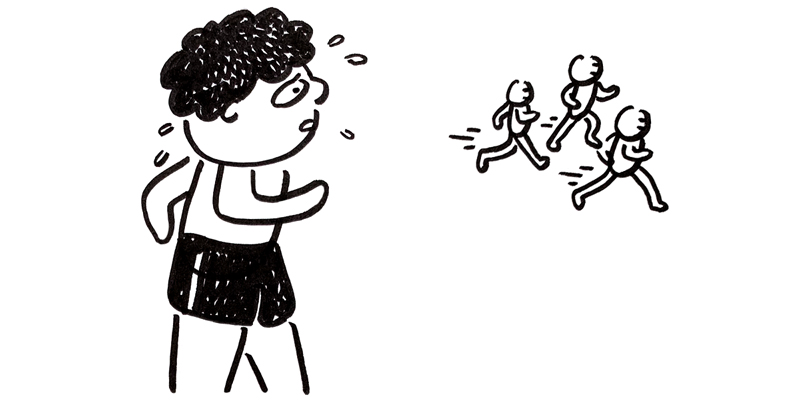
I’ve received countless emails from people asking for variations of the same thing:
I’m just now learning to draw now at ___ age, and now I feel like I’ve wasted all those years.
I stopped drawing when I had kids, and now I feel like I’m way behind.
I wasn’t creative growing up, and now I feel like I’ll never catch up.
The question underneath these feelings is: Is it too late for me to start making art?
And my whole-hearted, immediate answer is: No! Absolutely not!
This is not a race y’all. I don’t care if you’re 21, 65, or 102—it’s never too late to start making art.
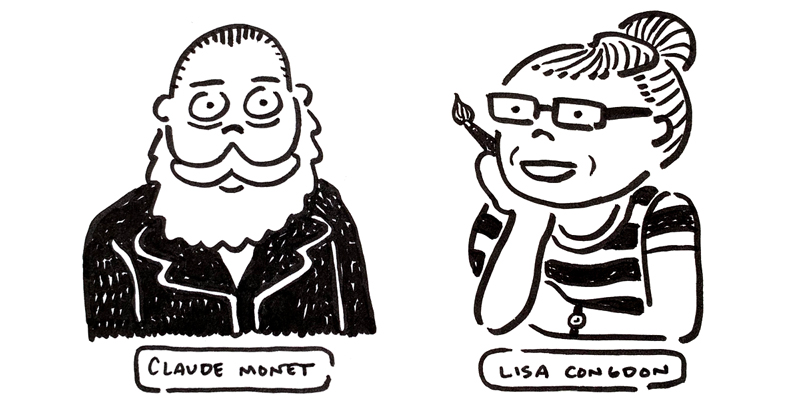
Claude Monet didn’t begin painting until mid-life. He painted a little in his 30’s but didn’t fully discover his inimitable artistic style until his 40’s. Most of the paintings you would recognize by Monet were done in his 50’s-60s’s and he was making art well into his later years, including Water Lilies when he was 76!
Lisa Congdon didn’t begin making art until 32, and didn’t begin working full-time as an artist until over a decade later. She is currently 51, and is a well-known illustrator and has worked for huge clients (like MoMA!), exhibits her art in solo shows, sells art prints, and has published 8 books.
Ok, alright, so we know it can be done—you can start making art later in life. But how? Here are 4 tips on how to overcome the belief that it’s too late to start making art.
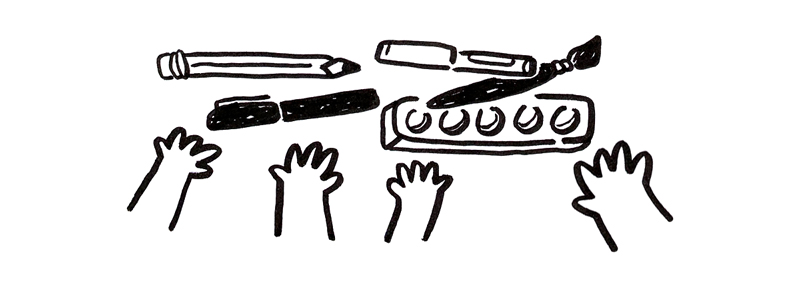
Begin Now
You have the drive to make art, you have the desire to share it with others, but you also know it’s not as good as you want it to be. And that contradiction can stop you from doing anything at all.
We have to remind ourselves that everyone has to start somewhere, no matter what age they are. So you have to start wherever you are. You’ll never wake up one day and feel like you’re good enough to start or good enough to share. The only way to get better, is to begin.
“There is never a perfect time to do anything. So it’s important to just begin, even when you aren’t quite ready.”
–Lisa Congdon

Recognize the Strengths of Your Age
When Lisa Congdon began making art in her 30’s she believed she had an asset that younger artists didn’t: more self-awareness. She knew more about who she was and what she was interested in than she did decades ago. That self-awareness made it easier for her to hone in on her unique artistic style.
“I just started drawing the stuff I was interested in and I didn’t overthink it. It freed me a little bit.”
–Lisa Congdon
Along with the more recognizable weaknesses, each decade also brings it’s own new strengths. Reminding yourself of the strengths of your age can help reframe how you think about your age and your art.
In your 20’s? Maybe you’re surrounded by other people who are also trying to find out who they are and what they’re passionate about, and interested in growing and learning.
In your 30’s? Maybe you have children in your life to serve as constant inspiration and shining examples of how to play.
In your 40’s? Maybe you’re beginning to tap into more self-awareness and who you are as a person.
In your 50’s? Maybe you’ve begun to realize what’s really important in life and feel more free to make art without the pressure of making money from it.
In your 60’s? Maybe you’re retired and have more time on your hands to make art freely.
In your 70’s? Maybe you have grandchildren who can make art alongside you.
In your 80’s? Maybe you have a lifetime of stories that you want to share with your family and friends through art.
In your 90’s? Maybe art is the way you keep your mind sharp and hands moving.
In your 100’s? Maybe you’re a kick butt granny/grandpa who does whatever the heck they want!
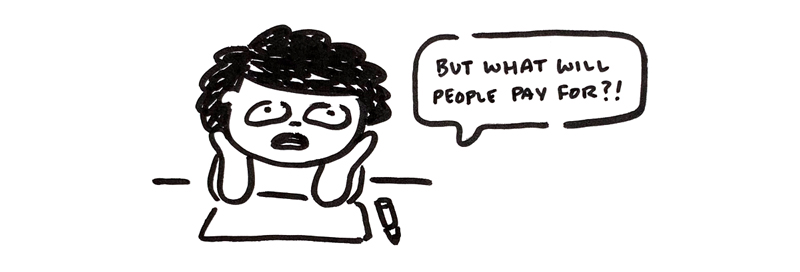
Draw for Fun, Not for Money
Making art as a career is wonderful and amazing, and obviously I endorse it because it’s what I do for a living. But you cannot BEGIN learning how to make art and aim to make money off your art at the same time. You have to first focus on your art, and later think about how you could turn it into a career, if that’s what you wish, though I’m also a strong evangelist for art as a hobby. You don’t have to make money off your art for it to be valuable and worthwhile.
My point is, you have to find yourself as an artist before you can sell yourself as an artist. Trying to mix the two separate processes from the beginning is a recipe for struggle and creative block.
“The minute you put all of the pressure on your art career to feed you is the minute it becomes extremely stressful.”
–Lisa Congdon
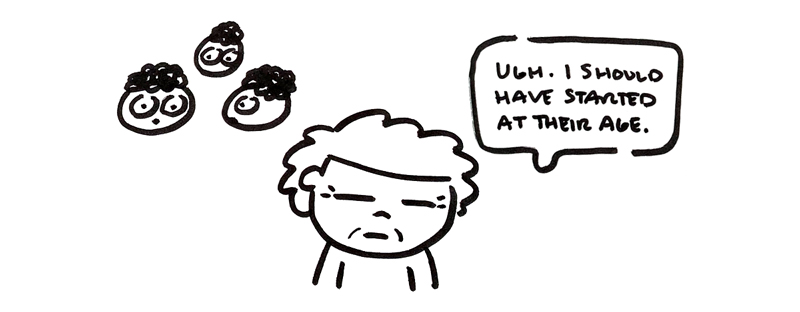
Comparing Yourself to Others
Let’s cut to the chase. The real issue that the “is it too late?” question reveals is comparison. You are comparing yourself to other people and other people’s artistic journeys. They’ve already done this much by such-and-such age and I haven’t done anything! This mindset is where the sensation of needing to “catch up” and of “falling behind” originate.
It’s a matter of seeing other people’s accomplishments and setting those same expectations for ourselves immediately without thinking about that person’s journey, what they’ve been through, or how long they’ve been at it.
Everyone’s path is different and your’s probably happened the way it did for a reason. Maybe you needed that decade working as a science teacher to develop your passion for microbes which led you to creating abstract bacteria paintings. Maybe you needed those two decades being a mother to develop your taste for children’s stories which led you to making children’s books.
“I also had to work on embracing this idea that there is room for everyone. Just because someone else you admire has some amazing accomplishment doesn’t mean that your work has any less value, or that your path is any less significant.”
–Lisa Congdon
Yes, learning to draw takes time. Yes, developing your artistic style takes time. None of this happens overnight. But that does not mean you should have started 20 years ago or that you can’t start now. You never know what your journey needed, but you can be confident that wherever life took you, it will somehow come through in your art. Because our art is who we are.

Every person has a different story to tell and stories change as life rolls on. There’s plenty of room for all stories, all artists, and all ages.
